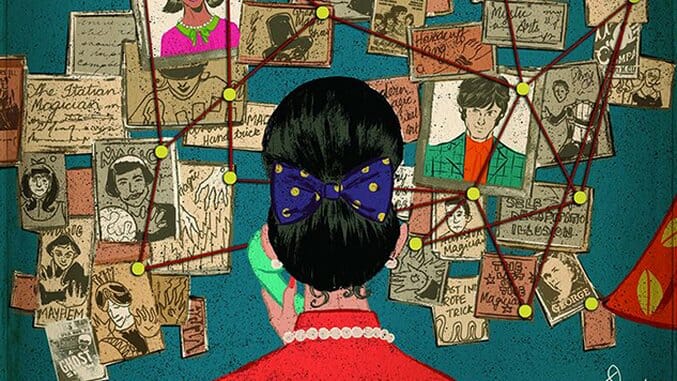Breaking in Your Writer Boots, Part II: Tini Howard on How To Become a Comic Scribe
The writer behind The Skeptics discusses her first year in the biz.
Cover Art by Devaki Neogi
A few months ago, the Paste Comics team received a tragic email: Tini Howard would no longer be able to write under the auspices of editorial objectivity. Of course she couldn’t—the weekly Required Reading contributor had not only announced her new series, The Skeptics with artist Devaki Neogi, but was also scripting Mighty Morphin Power Rangers: Pink and had work lined up with Gerard Way’s new imprint at DC Comics, Young Animal. And those were only the projects she could formally announce. She had evolved from a writer about comic books to a writer of comic books.
But though she could no longer comment on the work of publishers she wrote for, Tini also had hard-earned insight into an industry whose landscape is in the midst of huge changes. She’s been vocal on this very site about the necessity for views that transcend those of the straight white dudes who tend to dominate creative teams, and she’s currently shaping that change through comics that can be bought in stores right now.
So we asked Tini to recount her trajectory and give any advice to future comics writers about what it both means and takes to be a professional sequential arts scribe today.
Here’s the first entry in Tini’s diary series.
![]()
It’s been more than a week since last time, hasn’t it? That’s a good thing to keep in mind if you’re looking to get into comics professionally: script deadlines are the word for God on the lips and hearts of all comic book writers.
When I last left off, I was discussing my approach to the 2013 Top Cow Talent Hunt. When I won, it functioned like my first Big Break, and it deserves a certain amount of attention when it comes to how I approach my whole career.
People don’t need permission to make comics, and you don’t need to wait until you win a contest. But I’ve never been shy about asking for help. I didn’t know how to make comics—not really—and it seemed like a great way to learn was by making my way into the good graces of people who did this professionally. And a contest? I’m a Slytherin. I like to win.
I’d heard about it the way I’d heard about any other opportunity I shot for and, thus far, hadn’t been successful—the Internet. Twitter and Tumblr can be evil distractions and brutal timesinks, but they were also a necessary part of my early comics career. When I wanted to avoid actual writing, I’d spend hours Googling “comic writer submissions” or “comics anthology submissions” and submitting to them, seeing who might accept me.
The Top Cow Talent Hunt was particularly appealing to me because it seemed so real; it was an existing character (The Magdalena), an existing company. It would mean a full issue with my name on the cover and an artist assigned to me. I now realize, of course, that this doesn’t make a comic more real, but as a fan looking into the industry, it seemed like the realest of options. I’d read some Top Cow comics growing up in the ‘90s. Here and there, I had jumped in whenever I had some extra money and the going looked good. So I could do this.
-

-

-

-

-

-

-

-

-

-

-

-

-

-

-

-

-

-

-

-

-

-

-

-

-

-

-

-

-

-

-

-

-

-

-

-

-

-

-

-










































